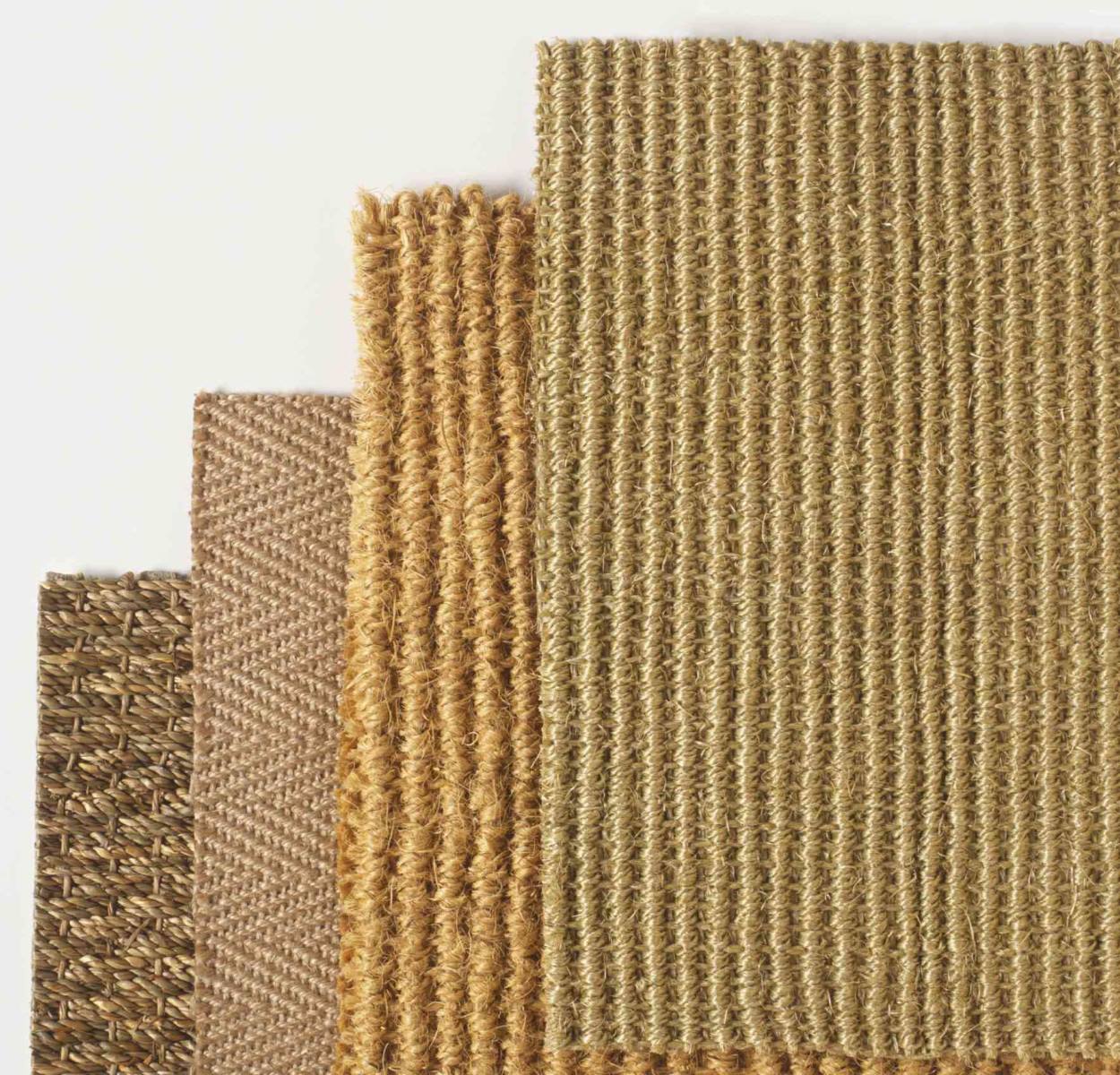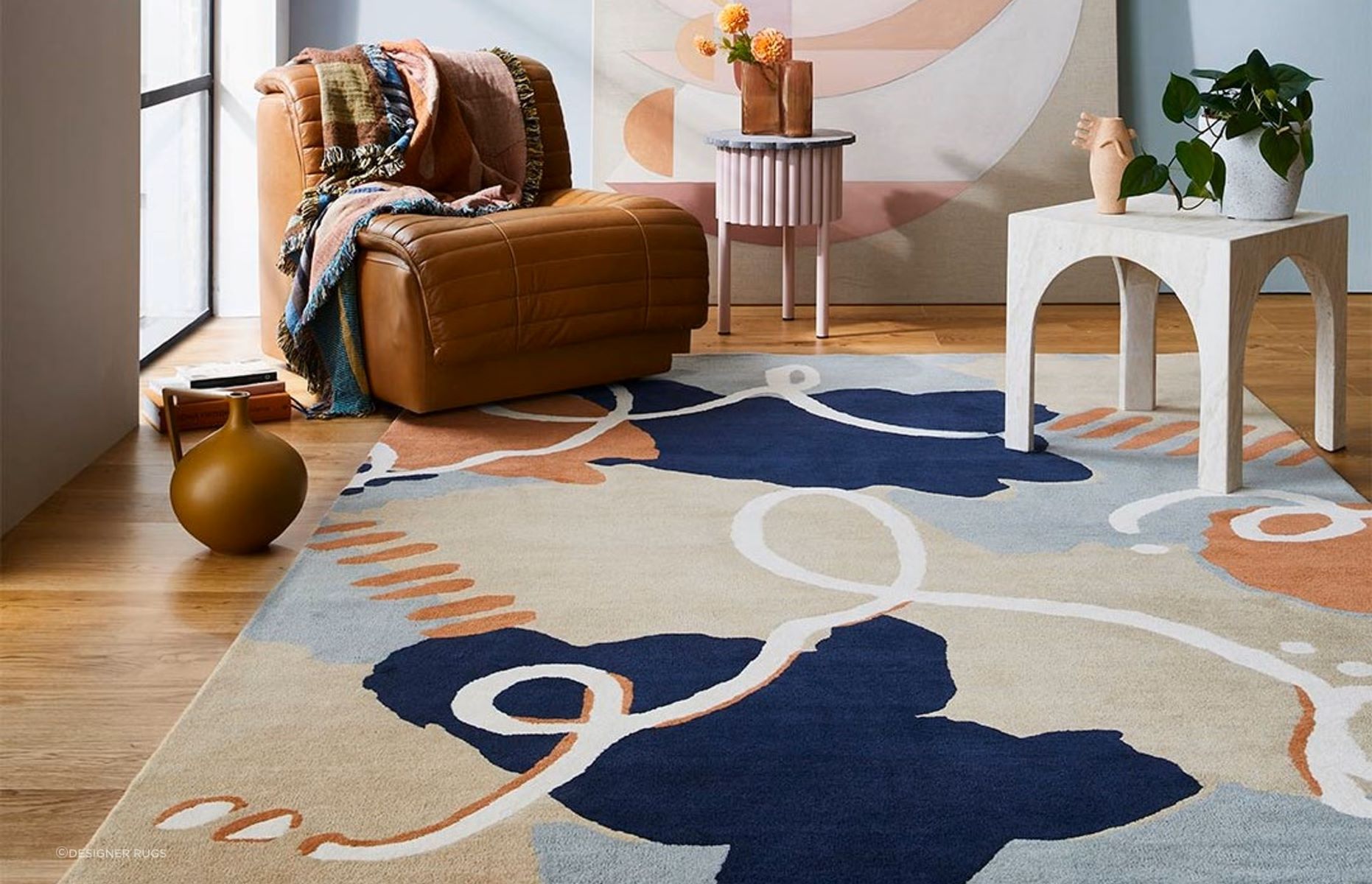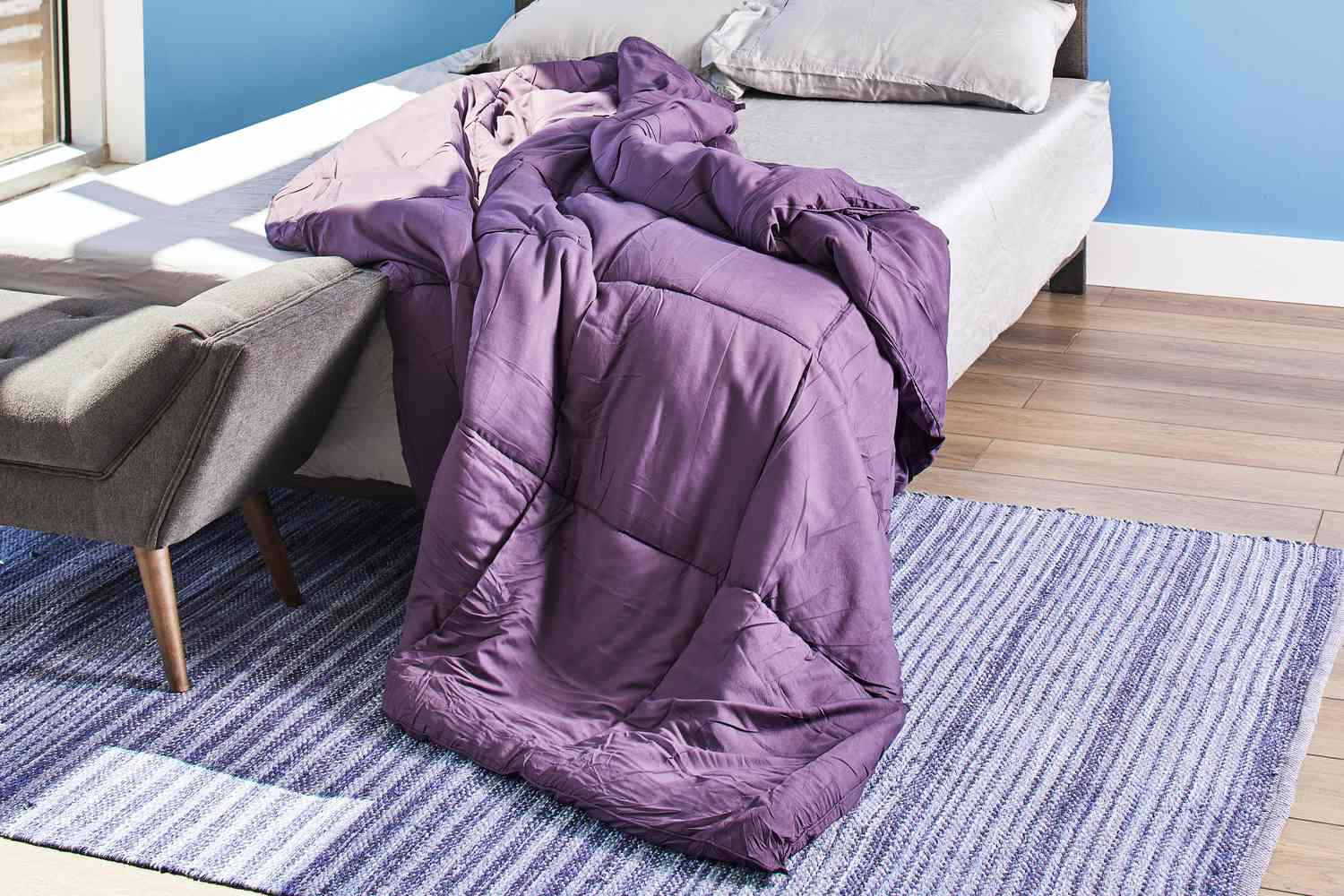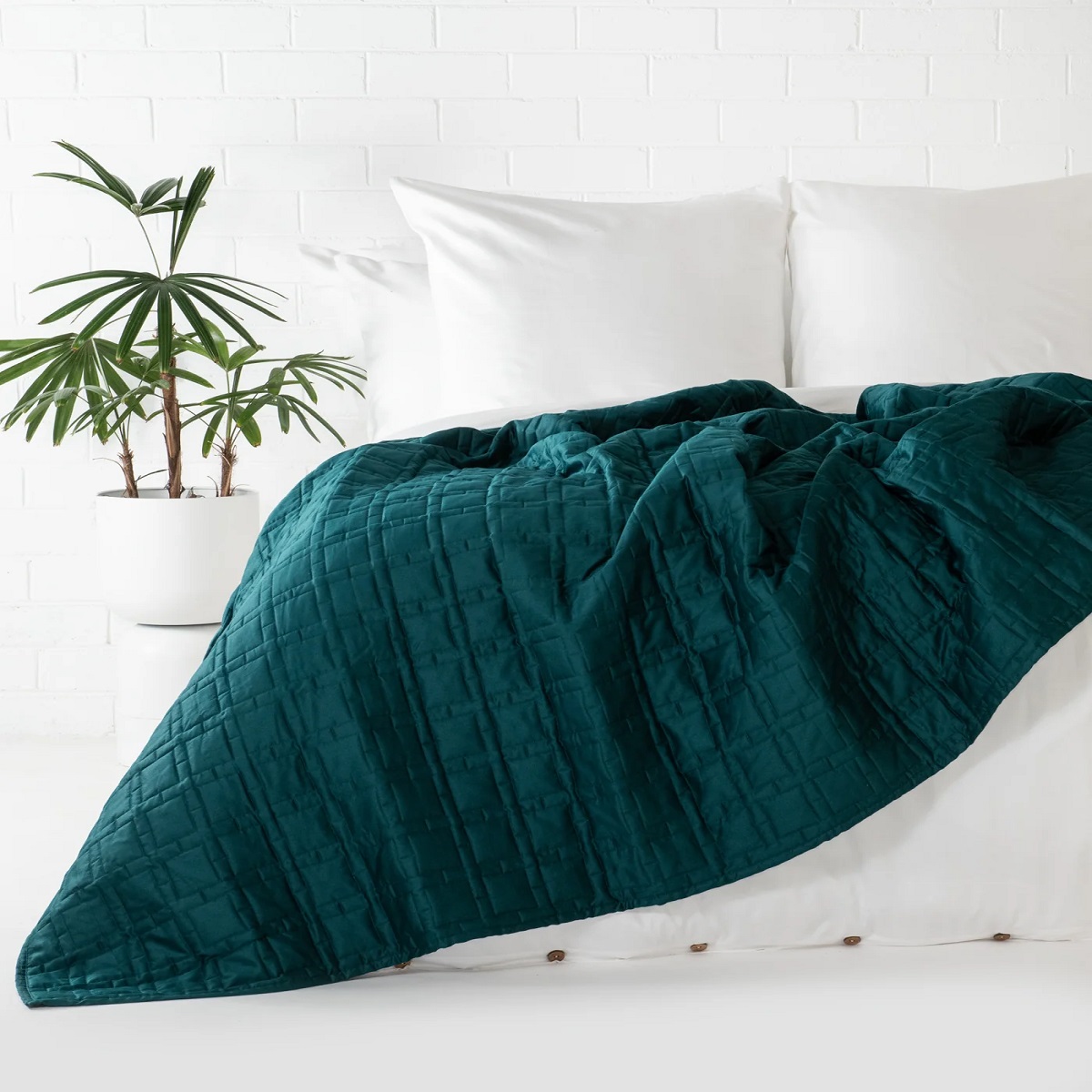Home>Articles>What Is The Difference Between Sisal And Jute Rugs


Articles
What Is The Difference Between Sisal And Jute Rugs
Modified: January 19, 2024
Discover the key differences between sisal and jute rugs in this informative article. Learn about their unique features, benefits, and how to choose the right one for your home.
(Many of the links in this article redirect to a specific reviewed product. Your purchase of these products through affiliate links helps to generate commission for Storables.com, at no extra cost. Learn more)
Introduction
Sisal and jute rugs are popular choices for homeowners who want to add a touch of natural beauty to their space. Both rugs offer unique characteristics and benefits, but they also have distinct differences that make them suitable for different needs and preferences. Understanding the disparities between sisal and jute rugs can help you make an informed decision when selecting the perfect rug for your home.
When it comes to natural fiber rugs, sisal and jute are often mentioned together. However, they are derived from different plants and exhibit different qualities. Sisal rugs are made from the agave plant, while jute rugs are made from the jute plant. These fibers are then woven into durable and stylish rugs that provide various advantages in terms of appearance, durability, and eco-friendliness.
In this article, we will explore the differences between sisal and jute rugs, including their materials, appearance and texture, durability, eco-friendliness, cost, maintenance, and best uses. By the end, you will have a better understanding of which type of rug suits your needs and preferences.
Key Takeaways:
- Sisal rugs are durable, perfect for high-traffic areas, and add a rustic touch to any room with their coarse texture and natural beige color. They are ideal for creating a warm and earthy ambiance in your home.
- Jute rugs offer a softer, luxurious texture and a golden brown hue, adding warmth and elegance to low-traffic areas. Their eco-friendly nature and affordability make them a popular choice for creating a cozy and inviting atmosphere.
Definition of Sisal Rugs
Sisal rugs are made from the fibers of the agave sisalana plant, a species native to Mexico. These plants are cultivated for their long, sturdy leaves, which are processed to extract the fibers used in sisal rugs. The natural color of sisal fibers is a light beige, which gives the rugs a warm and earthy appearance.
Sisal fibers are known for their strength and durability, making sisal rugs an excellent choice for high-traffic areas in your home. The dense and tight weave of sisal rugs ensures that they can withstand heavy use without showing signs of wear and tear. In addition, sisal fibers are resistant to dirt, making them easy to clean and maintain.
One of the defining features of sisal rugs is their coarse texture. The fibers are naturally rough and provide a tactile experience when walking barefoot on the rug. This texture adds a layer of visual interest and depth to the rug, making it a visually appealing addition to any room.
Furthermore, sisal rugs are highly versatile and can complement various interior design styles. Their neutral beige color allows them to seamlessly blend with different color schemes and décor themes. Whether you have a modern, minimalist space or a more traditional and rustic setting, a sisal rug can bring warmth and texture to the room.
It is essential to note that sisal rugs are not recommended for outdoor use or rooms with high moisture levels, as excessive exposure to water can damage the natural fibers. However, they are perfect for areas such as living rooms, bedrooms, or dining rooms where you want to add a natural and organic touch.
Definition of Jute Rugs
Jute rugs are made from the fibers of the jute plant (Corchorus olitorius and Corchorus capsularis), native to the Indian subcontinent. Jute is a versatile and durable natural fiber that has been used for centuries to create a wide range of products, including rugs, textiles, and bags.
One of the distinguishing characteristics of jute rugs is their soft and lustrous appearance. The fibers have a golden brown hue that adds warmth and richness to any space. Jute rugs can have a smooth and shiny surface, giving them an elegant and sophisticated touch.
Jute fibers are renowned for their eco-friendliness and sustainability. The jute plant is fast-growing and requires minimal water and pesticides to grow, making it a highly renewable resource. Additionally, jute rugs are biodegradable, making them an environmentally friendly choice for conscious consumers.
While jute is known for its soft feel, it is not as durable as sisal. Jute fibers are less hardwearing and can be more prone to damage in high-traffic areas. Therefore, jute rugs are better suited for spaces with lower foot traffic, such as bedrooms or home offices.
Another characteristic of jute rugs is their excellent insulation properties. Jute fibers are natural insulators, providing insulation against both heat and sound. This makes jute rugs an ideal choice for rooms that require a cozy and quiet atmosphere, such as bedrooms or nurseries.
In terms of design versatility, jute rugs have a more casual and laid-back aesthetic. They work well in bohemian, coastal, or farmhouse-inspired interiors, where their natural texture and earthy tones can enhance the overall design scheme.
Proper care and maintenance are crucial to preserving the beauty and longevity of jute rugs. They should be kept away from excessive moisture and direct sunlight to prevent fading and mold growth. Regular vacuuming and occasional spot cleaning are recommended to remove dirt and stains.
Overall, jute rugs offer an affordable and eco-friendly option for adding a touch of natural elegance to your home. Their soft texture, sustainable nature, and versatile design make them a popular choice among homeowners looking to create a cozy and inviting ambiance.
Material Differences
One of the key differences between sisal and jute rugs lies in the materials used to make them. Sisal rugs are made from the agave sisalana plant while jute rugs are made from the jute plant. These plants have distinct characteristics that result in variations in the rugs’ appearance, texture, durability, and overall performance.
Sisal fibers are known for their strength and resilience. The sisalana plant has long, stiff leaves that are composed of strong and durable fibers. As a result, sisal rugs are exceptionally durable and can withstand heavy foot traffic without showing signs of wear and tear. The dense and tight weave of sisal rugs provides added durability, making them ideal for high-traffic areas such as living rooms or hallways.
On the other hand, jute fibers are softer and more pliable compared to sisal. The jute plant’s inner fibers are softer and less sturdy, which affects the rug’s overall durability. Jute rugs are best suited for areas with lower foot traffic, such as bedrooms or home offices.
Additionally, the different fibers give each rug a distinct texture. Sisal rugs have a coarse and rough texture, providing a unique and tactile experience when walking or sitting on the rug. This texture also adds visual interest and depth to the rug, making it a stylish addition to any space. Jute rugs, on the other hand, have a smoother texture that lends a more luxurious and softer feel underfoot.
In terms of appearance, sisal rugs have a natural light beige color, which adds warmth and an earthy aesthetic to the room. Jute rugs, however, have a distinctive golden brown hue that exudes a sense of elegance and sophistication. These natural colors make both sisal and jute rugs versatile options that can complement various interior design styles.
It is important to consider these material differences when choosing between sisal and jute rugs. If you need a durable and resilient option for high-traffic areas, sisal rugs are the better choice. Alternatively, if you prioritize a softer texture and a more refined look, jute rugs are a great option for lower-traffic areas.
Ultimately, both sisal and jute rugs offer unique qualities and visual appeal depending on your specific preferences and needs. By understanding the material differences, you can make an informed decision and select the perfect rug to enhance the style and functionality of your space.
Appearance and Texture Variances
When it comes to the appearance and texture of sisal and jute rugs, there are noticeable differences that can influence your choice based on your desired aesthetic and tactile preferences.
Sisal rugs have a distinct, coarse texture that sets them apart. The natural fibers of the sisalana plant create a rough surface, adding visual depth and interest to the rug. This coarse texture not only enhances the overall look of the rug but also provides a unique tactile experience. Walking or sitting on a sisal rug offers a sensation of natural fibers underfoot, which can be appealing for those seeking a more rustic or organic feel in their space.
Jute rugs, on the other hand, have a softer and smoother texture compared to sisal. The fibers of the jute plant result in a more pliable and gentle surface. This softness adds a touch of luxury and comfort to the rug, making it an inviting option for areas where you may enjoy sitting or lounging, such as bedrooms or reading nooks. Jute rugs also exude a natural luster, with their golden brown color radiating warmth and elegance in any room.
When it comes to appearance, sisal rugs have a natural, earthy tone. The fibers of the agave sisalana plant are typically a light beige color, which adds warmth and a sense of nature to your space. Sisal rugs’ neutral color makes them a versatile choice that can seamlessly blend with a variety of interior design styles, from modern to rustic or coastal themes.
On the other hand, jute rugs have a distinctive golden brown hue. This natural color gives the rug a warm and rich appearance, creating an inviting atmosphere. Jute rugs can add a touch of elegance and sophistication to a space, especially when paired with other natural materials such as wood or rattan furniture.
Considering the appearance and texture variances between sisal and jute rugs is crucial when selecting the right rug for your home. If you prefer a coarse and textured surface that adds visual interest and a rustic feel, sisal rugs are the way to go. Alternatively, if you prioritize a softer and more lustrous texture that offers a sense of comfort and elegance, jute rugs are the better option.
Ultimately, the choice between sisal and jute rugs depends on your personal taste and the desired ambiance you want to create in your space. Whether you opt for the rough charm of sisal or the smooth allure of jute, both rugs can enhance the visual appeal and add a touch of natural beauty to your home.
Read more: What Are Sisal Rugs
Durability and Sturdiness Comparison
When it comes to durability and sturdiness, sisal rugs have a clear advantage over jute rugs. Sisal fibers are known for their exceptional strength and resilience, making sisal rugs highly durable and able to withstand heavy foot traffic.
The fibers of sisal rugs are derived from the agave sisalana plant, which produces long and sturdy leaves. These fibers are then tightly woven to create a dense and durable rug. Sisal rugs can maintain their structure and appearance even in high-traffic areas like living rooms or hallways.
Jute rugs, on the other hand, are less durable compared to sisal rugs. Jute fibers are softer and more pliable, which makes them more prone to wear and tear. While jute rugs are still capable of withstanding regular foot traffic in low-traffic areas like bedrooms or home offices, they might not be as resilient in heavily used spaces.
It is important to consider the intended use and foot traffic of the area where you plan to place the rug. If you expect high levels of foot traffic or have pets or children running around, sisal rugs are a more suitable choice due to their enhanced durability and sturdiness.
However, if you have a specific space in mind where foot traffic is minimal and you prioritize a softer and more luxurious feel on the rug, jute rugs can still be a suitable option for adding warmth and style to your home.
To prolong the lifespan of both sisal and jute rugs, regular maintenance and proper care are crucial. This includes vacuuming regularly to remove dirt and debris and addressing spills or stains promptly. Both types of rugs should also be kept away from excessive moisture and direct sunlight to prevent possible damage.
Ultimately, while jute rugs may not be as durable as sisal rugs, their softer texture and appealing aesthetic can still make them a worthwhile choice for certain areas of your home. Consider your specific needs and the level of durability required when making a decision between sisal and jute rugs.
Sisal rugs are more durable and suitable for high-traffic areas, while jute rugs are softer and better for low-traffic areas. Consider the level of foot traffic when choosing between the two.
Eco-Friendliness and Sustainability
When it comes to eco-friendliness and sustainability, both sisal and jute rugs are excellent choices compared to synthetic alternatives. These natural fiber rugs offer numerous environmental benefits, making them a responsible and eco-conscious option for your home.
Sisal rugs are made from the fibers of the agave sisalana plant, which is cultivated in a sustainable manner. The plant grows quickly and requires minimal water and pesticides, making it a highly renewable resource. Additionally, sisal plants help enhance soil quality and prevent erosion, contributing to environmental conservation efforts.
Jute rugs, on the other hand, are made from the jute plant, a fast-growing crop that also requires minimal chemical treatment or irrigation. Jute plants have a high yield and can be harvested every four to six months, making them a highly sustainable and eco-friendly choice.
Both sisal and jute rugs are biodegradable, which means they will naturally decompose over time without contributing to landfill waste. When you are done with these rugs, they can be disposed of in an environmentally friendly manner, ensuring minimal impact on the planet.
In terms of production processes, sisal and jute rugs require less energy and emit fewer carbon emissions compared to synthetic rugs. The manufacturing processes of natural fiber rugs do not involve the use of harmful chemicals or toxins, making them a healthier and more environmentally friendly option for your home.
By choosing sisal or jute rugs, you are actively contributing to the reduction of synthetic materials in your living environment and promoting sustainability. Additionally, supporting the production and use of natural fibers helps create demand for these sustainable materials and supports the livelihoods of farmers and artisans involved in their cultivation and production.
It is important to note that the overall eco-friendliness of these rugs also depends on other factors, such as the dyes used in their production. When purchasing sisal or jute rugs, look for options that use natural, non-toxic dyes to minimize their environmental impact even further.
Considering the eco-friendliness and sustainability of sisal and jute rugs is not only beneficial for the environment but also aligns with a conscious and responsible lifestyle. By opting for natural fiber rugs, you can create a beautiful and eco-friendly home that reflects your commitment to a greener future.
Cost and Affordability
When it comes to cost and affordability, sisal and jute rugs offer different price ranges, allowing you to choose based on your budget and preferences.
Sisal rugs tend to be slightly more expensive compared to jute rugs. The production process of sisal rugs involves labor-intensive techniques, such as extracting fibers from the agave sisalana plant and weaving them into a dense rug. Additionally, the durability and longevity of sisal rugs contribute to their higher price point.
Jute rugs, on the other hand, are generally more affordable compared to sisal rugs. The jute plant is abundant, and the production process of jute rugs is less labor-intensive, resulting in a lower cost. This affordability makes jute rugs a popular choice for homeowners who want to achieve a natural look without breaking the bank.
It is important to note that the price of both sisal and jute rugs can vary depending on factors such as size, design complexity, and brand. Handmade or artisanal versions of these rugs may come at a higher price due to the craftsmanship involved.
Considering your budget when choosing between sisal and jute rugs is essential. If you have a flexible budget and prioritize durability and longevity, sisal rugs are worth the investment. They can withstand heavy foot traffic and maintain their appearance over time, making them a cost-effective choice in the long run.
However, if you are working with a tighter budget or have a lower foot traffic area where the rug will be placed, jute rugs offer an affordable and stylish option. They can still provide the natural and cozy aesthetic you desire without breaking the bank.
Ultimately, the choice between sisal and jute rugs should consider your budget, the intended use of the rug, and the overall look and feel you want to achieve in your space. By carefully weighing the cost and affordability factors, you can find the perfect rug that meets your needs without straining your budget.
Maintenance and Cleaning Requirements
Proper maintenance and regular cleaning are essential for keeping your sisal or jute rug in excellent condition and prolonging its lifespan. While both types of rugs have some similarities in terms of maintenance, there are a few variations in their cleaning requirements.
For daily maintenance, regular vacuuming is necessary to remove dust, dirt, and debris. Use a vacuum cleaner with a brush attachment or a handheld vacuum to gently suction the surface and remove any particles that may have settled into the fibers. Aim to vacuum your rug at least once a week, or more frequently in high-traffic areas.
When it comes to spills or stains, it’s crucial to address them promptly to prevent them from setting in. Blot the spill with a clean cloth or paper towel to absorb as much liquid as possible. Avoid rubbing the spill, as this can spread the stain further into the fibers. For solid or dry spills, gently scrape them off with a spoon or dull knife, taking care not to damage the rug.
When cleaning sisal rugs, it’s important to remember that they are prone to water damage. Sisal is highly absorbent, so excessive moisture can cause the fibers to swell, warp, or develop mold and mildew. Spot cleaning with a dry cleaning solution designed for natural fibers is typically recommended for sisal rugs. Follow the instructions provided by the manufacturer or consult a professional cleaner for guidance.
Jute rugs are generally more resistant to water and can tolerate slightly more moisture compared to sisal rugs. However, it is still important to avoid over-wetting the rug, as excessive moisture can lead to mold or mildew growth. Spot cleaning with a mild detergent and a soft cloth is usually suitable for jute rugs. Gently blot the stain without rubbing and then allow the area to air dry.
Keep in mind that direct sunlight can cause fading and discoloration in both sisal and jute rugs. Whenever possible, position your rug away from direct sunlight or use window treatments to protect it from prolonged exposure.
If your sisal or jute rug requires a more thorough cleaning, it is recommended to seek professional cleaning services. Professional cleaners have the expertise and equipment to effectively clean and restore the appearance of natural fiber rugs without causing damage.
By following these maintenance and cleaning practices, you can keep your sisal or jute rug looking fresh and beautiful for years to come.
Read more: What Are Jute Rugs Good For
Best Uses and Recommendations
Both sisal and jute rugs offer unique qualities that make them suitable for various uses and recommendations within your home. Understanding their strengths and characteristics can help you make an informed decision about where to place these natural fiber rugs for maximum impact and functionality.
Sisal rugs are an excellent choice for high-traffic areas such as living rooms, hallways, or entryways. Their durable and hardwearing nature allows them to withstand heavy foot traffic without showing signs of wear and tear. The coarse texture of sisal rugs adds visual interest and can be an ideal choice in rustic or organic-inspired interiors.
Due to their rough texture, sisal rugs may be less suited for spaces where you spend a significant amount of time barefoot, such as bedrooms or lounges. However, if you desire a natural and textured rug for these areas, placing a sisal rug under furniture or layering it with a softer rug can provide the desired visual effect while maintaining comfort.
Jute rugs, with their softer texture and luxurious appearance, are well-suited for areas where comfort is a priority. Bedrooms, nurseries, and reading nooks can benefit from the cozy ambiance that jute rugs create. Their natural luster and golden brown hue can add a touch of elegance and warmth to these spaces.
Since jute rugs are more pliable and less durable than sisal rugs, it is recommended to place them in low-traffic areas. Spaces where you want to evoke a relaxed and casual atmosphere, such as bohemian or coastal-inspired interiors, are ideal for jute rugs.
Both sisal and jute rugs can be versatile additions to your home. Their neutral colors allow them to seamlessly blend with various interior design styles, from modern and minimalist to traditional and eclectic. Experiment with different rug sizes and placement to achieve the desired visual impact in your space.
Consider layering a sisal or jute rug with a smaller patterned or textured rug to create a visually interesting and layered look. This can work particularly well in living rooms or dining areas, where the rug is used to anchor furniture and define the space.
Before purchasing a sisal or jute rug, measure the area and consider any specific design preferences or functional requirements. This will help ensure that you choose the appropriate size and style to enhance your space and achieve your desired aesthetic.
Ultimately, the best use and recommendation for sisal or jute rugs depend on your unique needs, personal style, and the specific ambiance you want to create in each room of your home. By considering these factors, you can select the perfect rug that enhances the beauty and functionality of your living space.
Conclusion
Choosing between sisal and jute rugs can be an exciting decision that allows you to incorporate natural beauty and texture into your home. Both types of rugs offer unique characteristics, benefits, and considerations that should be taken into account when making a choice.
Sisal rugs are known for their durability, strength, and coarse texture. They are excellent options for high-traffic areas and can withstand heavy foot traffic without showing signs of wear and tear. Their natural beige color and rough texture add visual interest and depth to any room.
Jute rugs, on the other hand, offer a softer and more luxurious texture. Their golden brown hue adds warmth and elegance to spaces, making them perfect for creating a cozy and comfortable ambiance in low-traffic areas. Jute rugs can provide a touch of sophistication and a softer underfoot experience.
Consider the material differences, appearance and texture variances, durability, eco-friendliness, cost, maintenance requirements, and the best uses and recommendations when deciding between sisal and jute rugs. These factors will help you make an informed choice based on your aesthetic preferences, budget, and the specific needs of each room.
Remember that both sisal and jute rugs contribute to a more sustainable and eco-friendly home compared to synthetic alternatives. They are made from natural fibers and offer biodegradability and a reduced carbon footprint. By choosing these natural fiber rugs, you support sustainable practices and help create a greener future.
In conclusion, sisal and jute rugs are versatile and stylish options that bring nature’s charm indoors. Whether you prefer the durability and rough texture of sisal or the softness and luxurious appearance of jute, both rugs can enhance the visual appeal and add a touch of comfort to your home.
Consider your specific needs, personal style, and the intended use of each space when selecting between sisal and jute rugs. By choosing the right rug, you can create a warm and inviting atmosphere that reflects your unique taste and enhances the overall ambiance of your living space.
Frequently Asked Questions about What Is The Difference Between Sisal And Jute Rugs
Was this page helpful?
At Storables.com, we guarantee accurate and reliable information. Our content, validated by Expert Board Contributors, is crafted following stringent Editorial Policies. We're committed to providing you with well-researched, expert-backed insights for all your informational needs.














0 thoughts on “What Is The Difference Between Sisal And Jute Rugs”